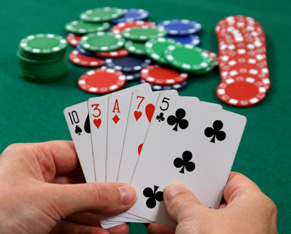
I have no easy answer about poker players who bluff some, but not all of the time. Opponents who bluff some of the time are better poker players than those found at either end of the bluffing spectrum. Better players, of course, can keep you guessing aboot whether or not they are bluffing. And when you're forced to guess, you will be wrong some of the time just the way it is.
Of course, you might be able to pick up a tell (a revealing gesture) and know when your opponent is bluffing, but that's not too likely in most cases. The sad truth is that players who keep you guessing are going to give you much more trouble than predictable opponents.
In most low-limit games, players bluff much too often. After all, when you play fixed-limit poker, all it costs is one additional bet to see someone's hand. And the pots are usually big enough, relative to the size of a bet, to make calling the right decision.
Here's an example: Suppose the pot contains $90, and your opponent makes a $10 bet. That pot now contains $100, and the cost of your call is only $10. Even if you figure your opponent to be bluffing only one time in ten, you should call. By calling, the laws of probability suggest that you'd lose a $10 bet nine times, for a loss of $90. Although you'd win only once, that pot would be worth $100. After ten such occurrences, you'd show a net profit of $10. As a result, you could say that regardless of the outcome of any particular hand, each call was worth one dollar to you.
The threat of a bluff is just as important as a bluff itself. A good player - one who bluffs neither too often nor too infrequently, and seems to do so under the right conditions - has something else going for them too. It's the threat of a bluff. Does he or she have the goods or are they bluffing? How can you tell? If you can't, how do you know what to do when they bet?
Also Try: What is Bluffing , Kinds of Bluffs , Do's and Dont's of Bluffing
No comments:
Post a Comment